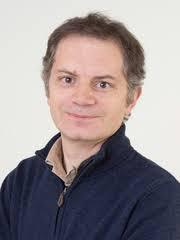Fabric of Space-time and Matter
The study of the building blocks of matter and their interactions has been a driving force in the development of modern science. The exploration of smaller and smaller distances came together with the emergence of new fields as diverse as classical and quantum mechanics, chemistry, atomic physics, nuclear physics and today high-energy particle physics. The ultimate goal is to identify a few fundamental principles governing the advent of matter from initial quantum fluctuations of the vacuum in the early universe to its structuring as observed today on vastly different scales in the universe at large. Such an ambitious program calls for a truly intersectional approach that a center like the WPC can help foster. Not only do new physics concepts have to be developed to describe new phenomena at different scales, but they often have to be formulated in terms of new mathematical ideas that advance under the strong influence of physics.
The topics covered by this scientific pillar include
- Standard Model of particle physics and its possible extensions at higher energy
- Physics at colliders and beyond
- The early universe connections: inflation, cosmological phase transitions, Higgs cosmology, axion cosmology, dark matter theory and phenomenology
- Probing fundamental physics with gravitational wave astronomy
- Experiencing gravity in strong field regime
- Towards a quantum gravity formulation
Main representative
Groups working in this field: Arutyunov, Brüggen, Diehl, Grojean, Kniehl, Moorgat-Pick, Pohl, Ringwald, Schomerus, Servant, Sigl, Weiglein, Westphal
Activities of this scientific pillar
A comprehensive overview of lecture courses in this scientific pillar is linked here.
Seminars of relevance for this scientific pillar are listed here.

Credit: UHH, Michael Grefe


